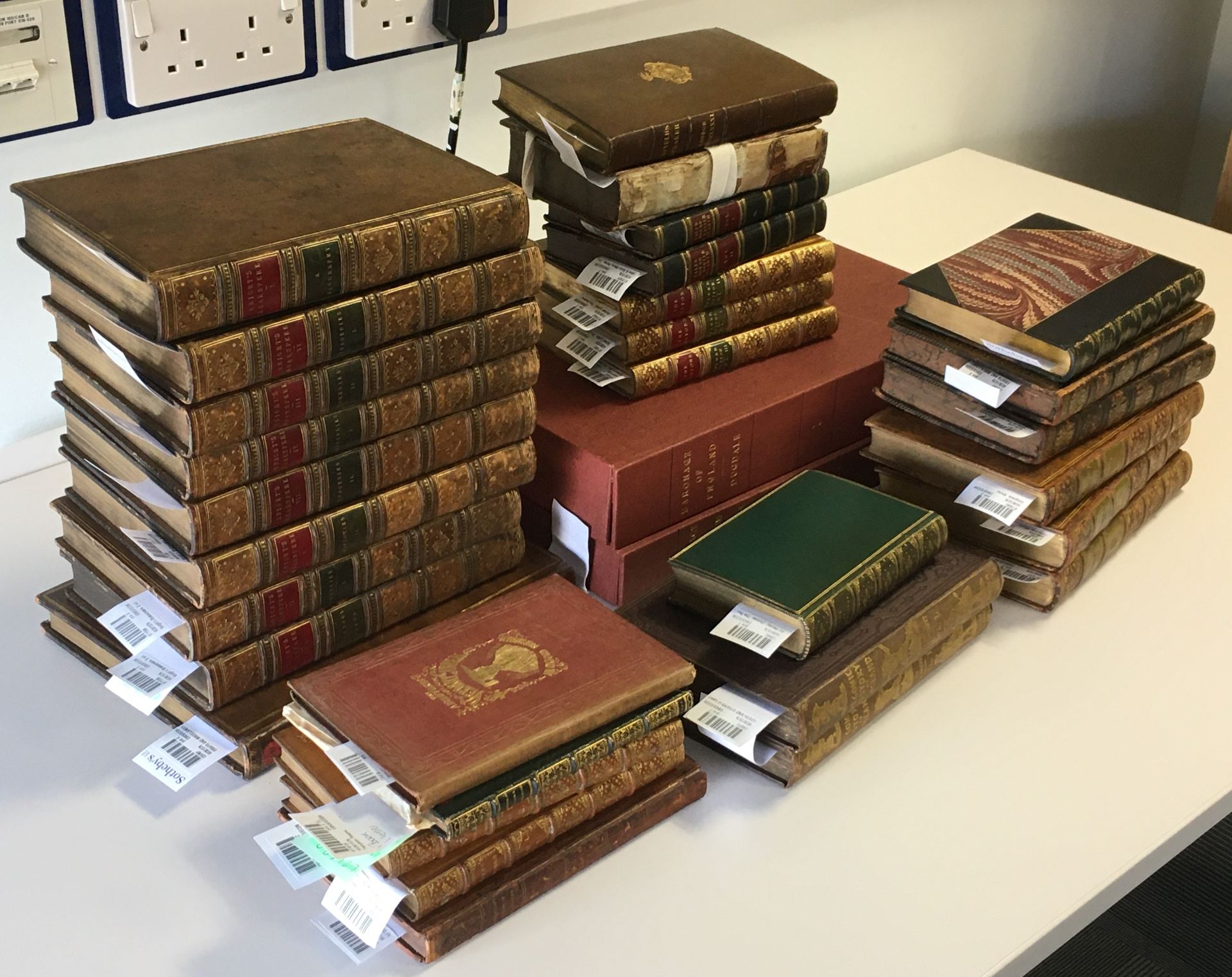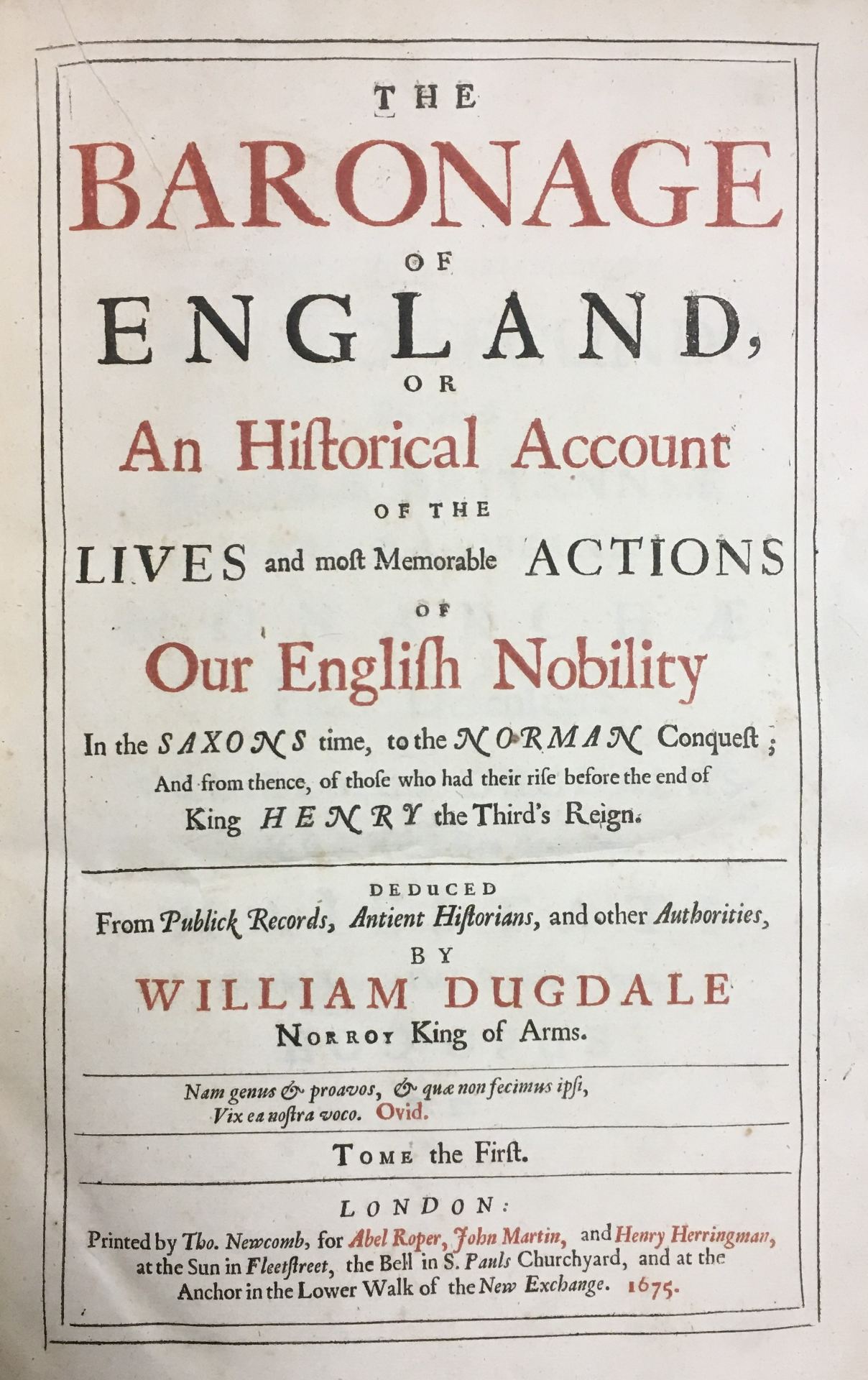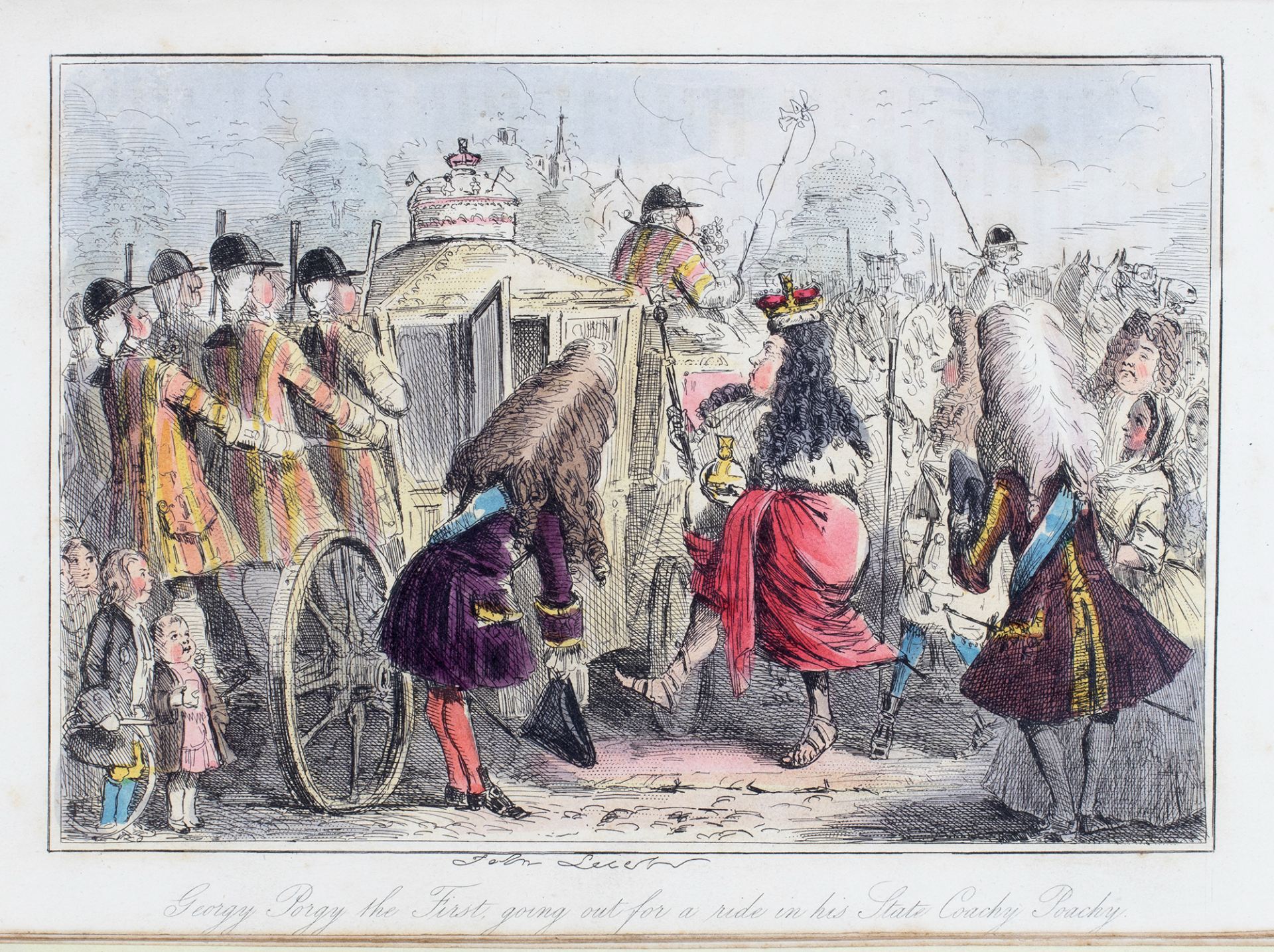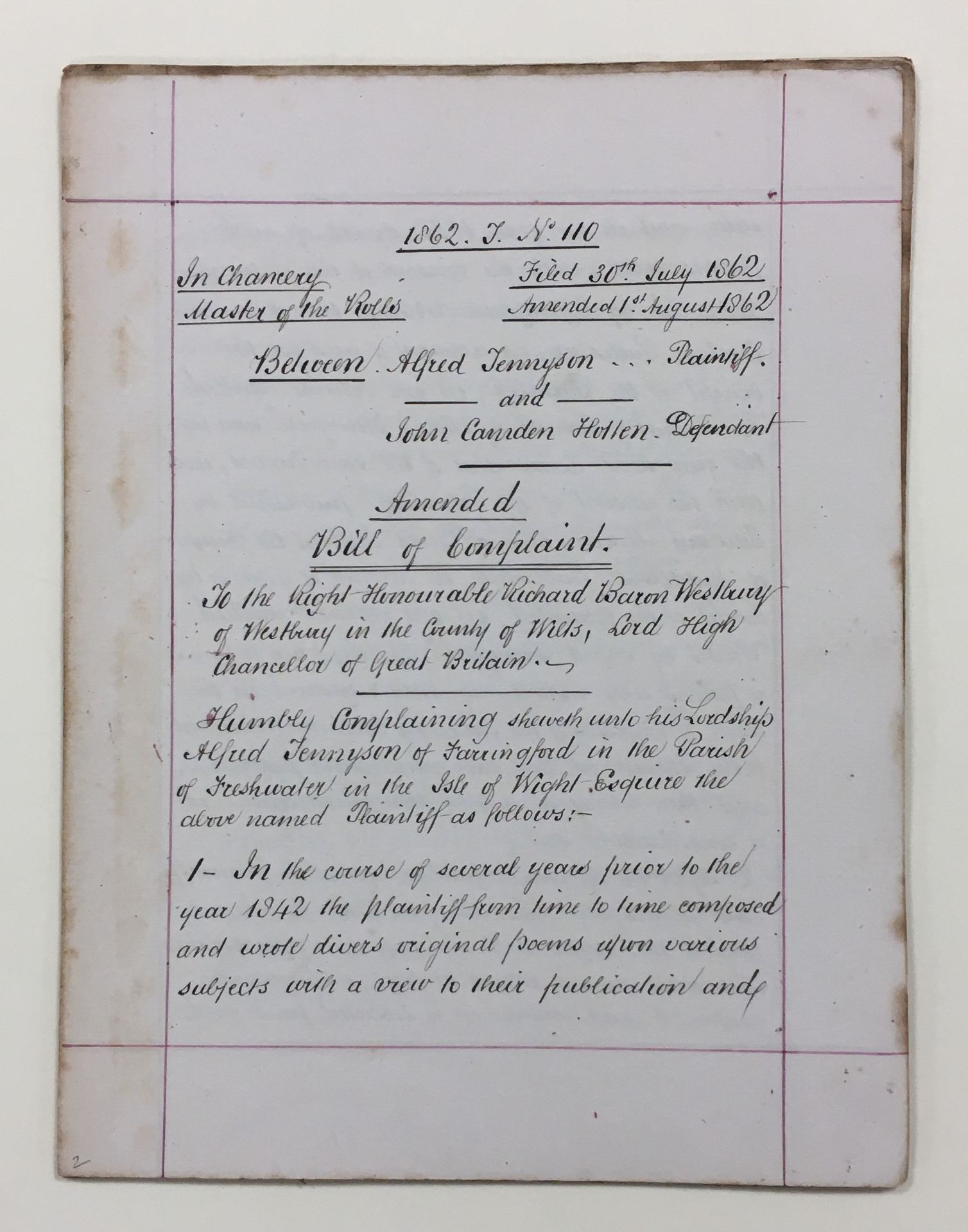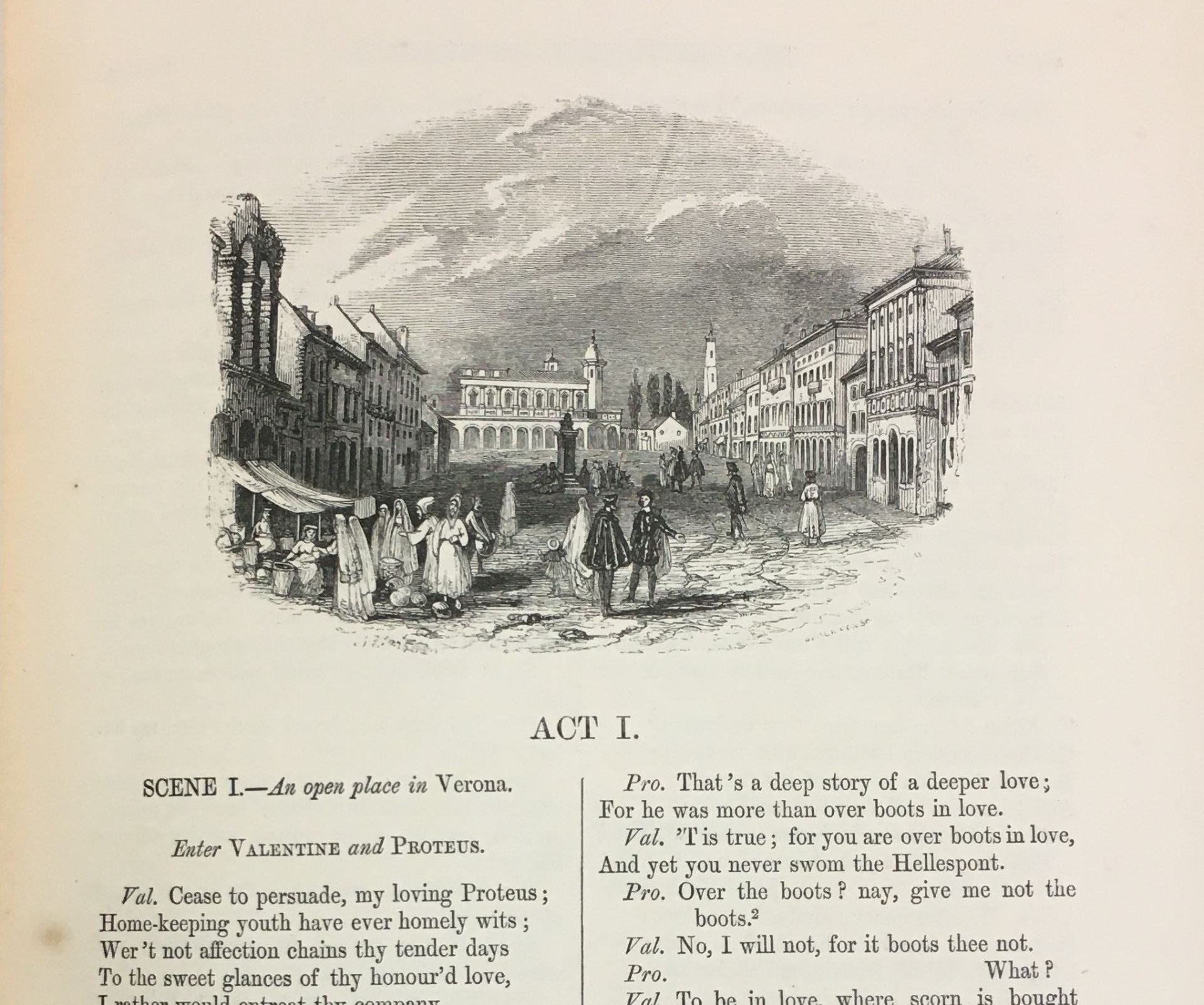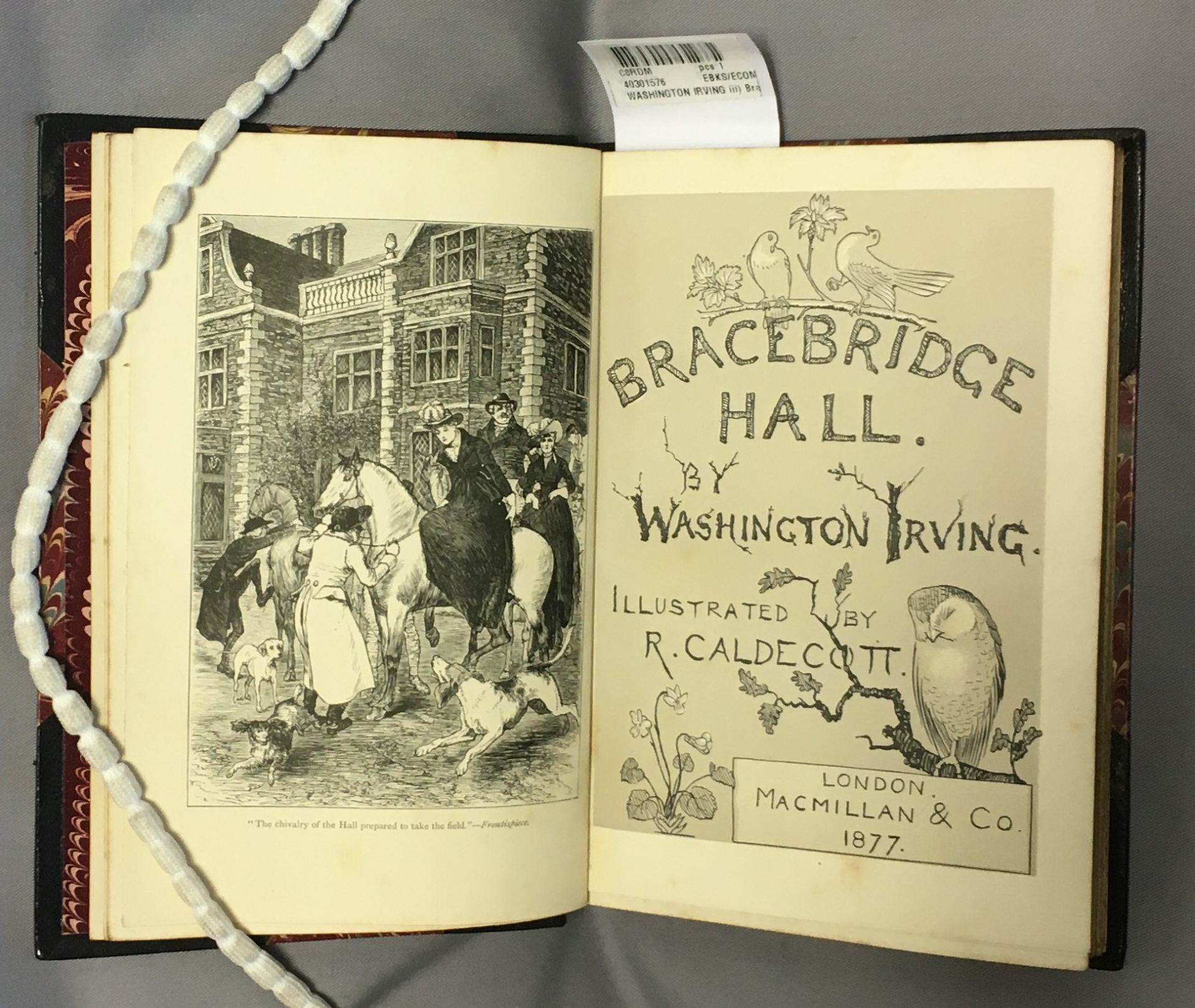Catherine Dack, Research Support Librarian, writes about Thomas Hervey’s ‘The Book of Christmas’.
Special Collections received an early Christmas present this year when Friends of the National Libraries gave us a donation of rare books from the Blavatnik Honresfield Library (see an earlier blog). Among the titles we received was a first edition copy of Thomas Hervey’s The Book of Christmas, published in 1836.
Thomas Hervey (1799-1859) was known as a poet, critic, and editor of the Athenaeum. In The Book of Christmas he describes a variety of Christmas and New Year customs and traditions. First published just before the Victorian enthusiasm for the festive season took hold, the book became popular and went through many editions. Part of its popularity must have been due to the lively Illustrations by Robert Seymour (1798-1836), a caricaturist who also worked on Dickens’ Pickwick Papers.
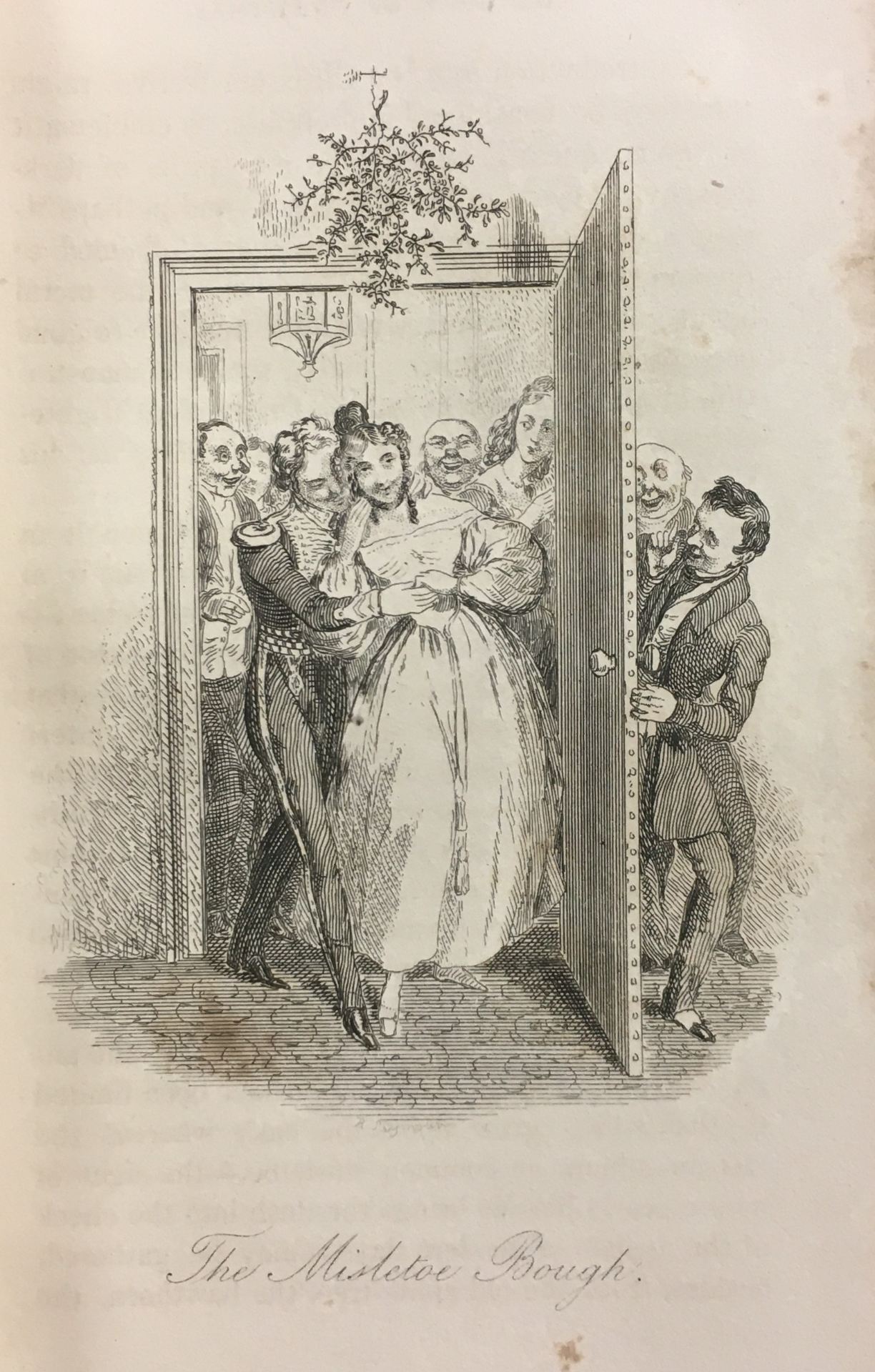
‘The Mistletoe Bough’. An illustration by Robert Seymour from ‘The Book of Christmas’ by Thomas Hervey (1836).
Among the holiday customs depicted are traditions that are still very familiar today, such as carol singing, kissing under the mistletoe, and Christmas dinner, turkeys for which were transported by coach with
…hampers piled on the roof and swung from beneath the body, and its birds depending, by every possible contrivance, from every part from which a bird could be made to hang.
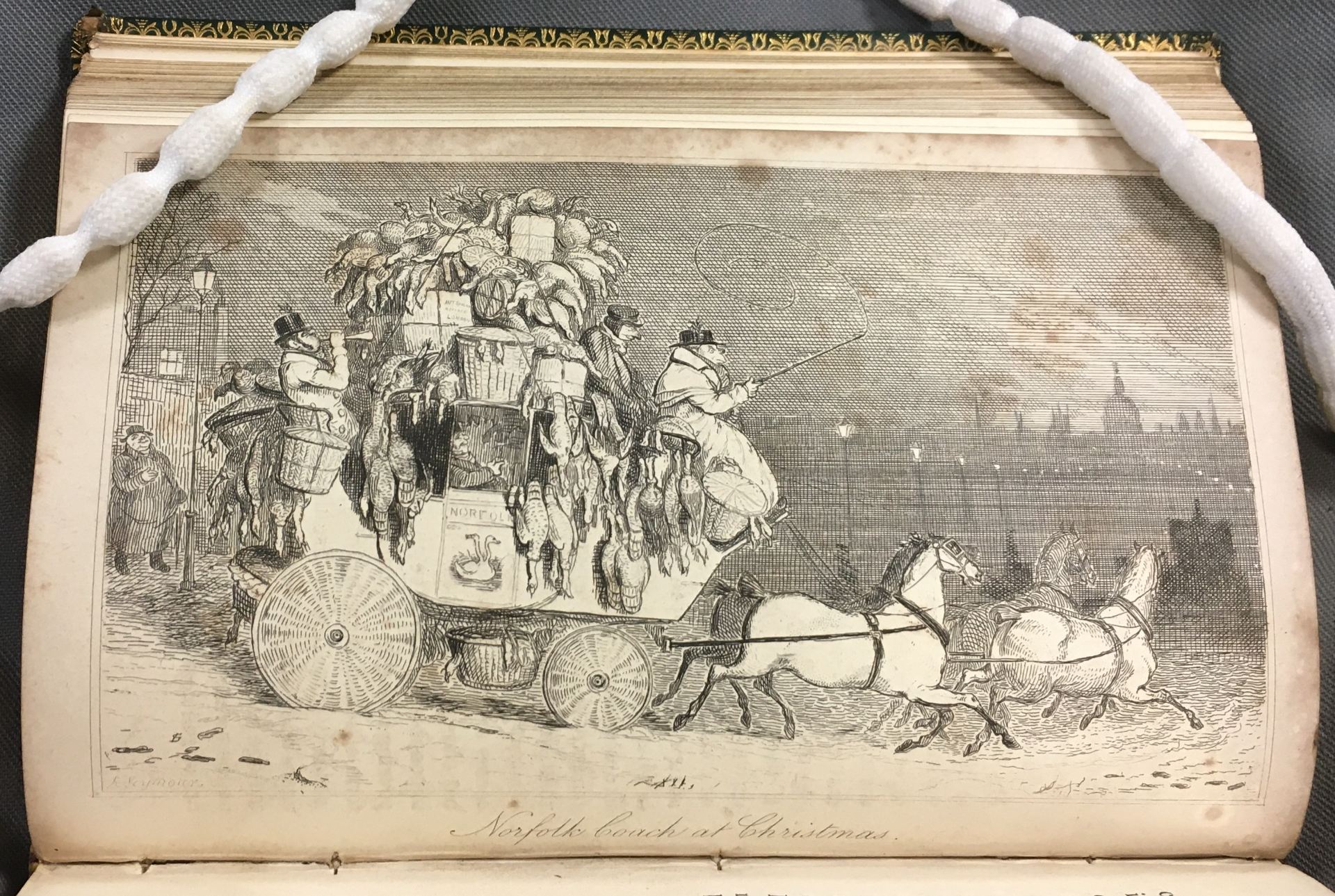
‘Norfolk Coach at Christmas’. An illustration by Robert Seymour from ‘The Book of Christmas’ by Thomas Hervey (1836).
The Christmas pudding is shown being boiled in a cloth (steaming being a more recent method for cooking the puddings) and is described as “a truly national dish” which “refuses to flourish out of England”.
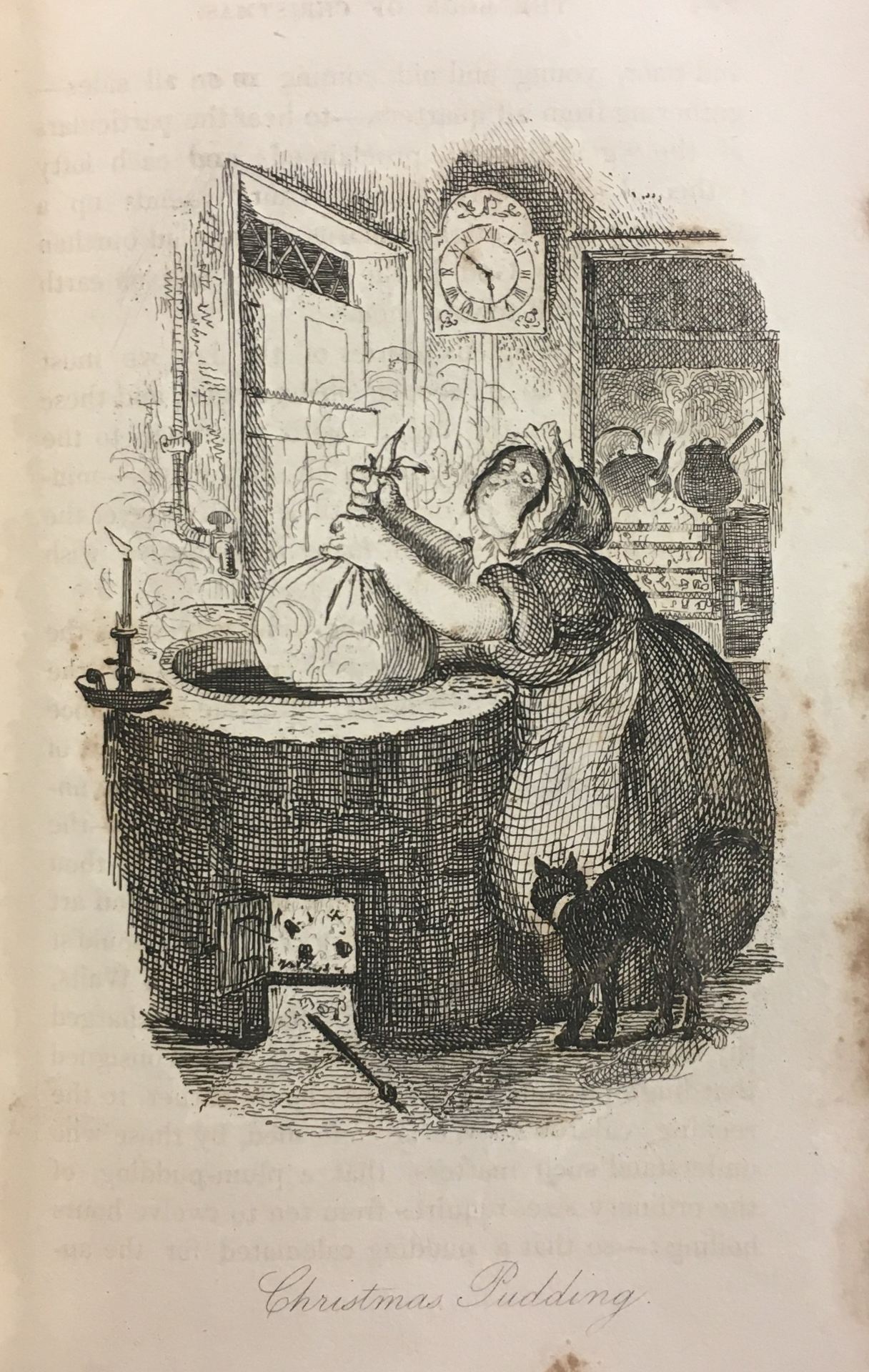
‘Christmas Pudding’. An illustration by Robert Seymour from ‘The Book of Christmas’ by Thomas Hervey (1836).
Father Christmas appears in an early guise as “Old Christmas”, wearing a traditional holly crown and riding a goat. Later in the 19th century, he merged with the figure of the gift-giving St Nicholas or Santa Claus.
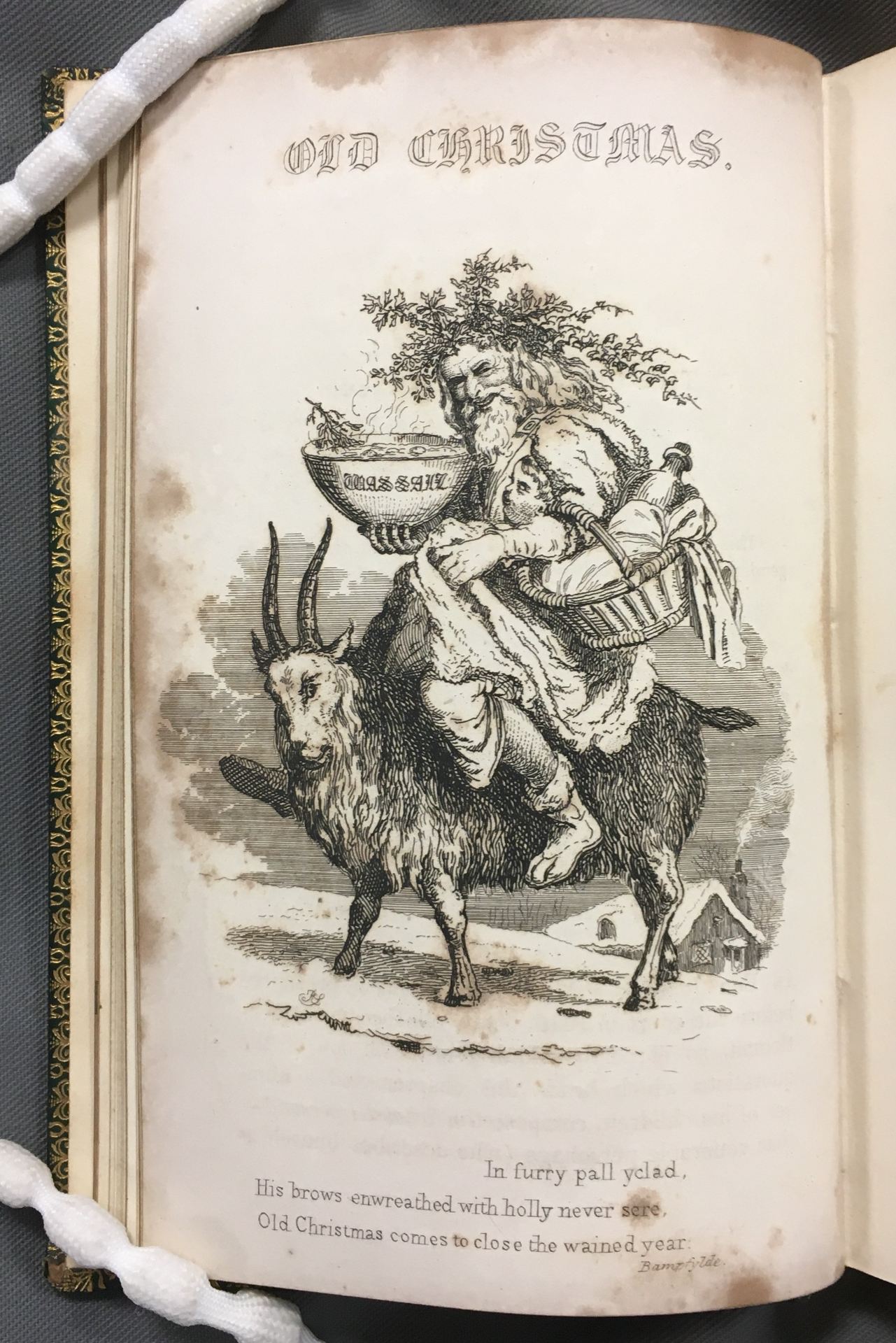
‘Old Christmas’. An illustration by Robert Seymour from ‘The Book of Christmas’ by Thomas Hervey (1836).
Christmas trees had not yet become popular at the time the book was first published, but the “ancient and still familiar practice of adorning our houses and churches with evergreens” is recommended.
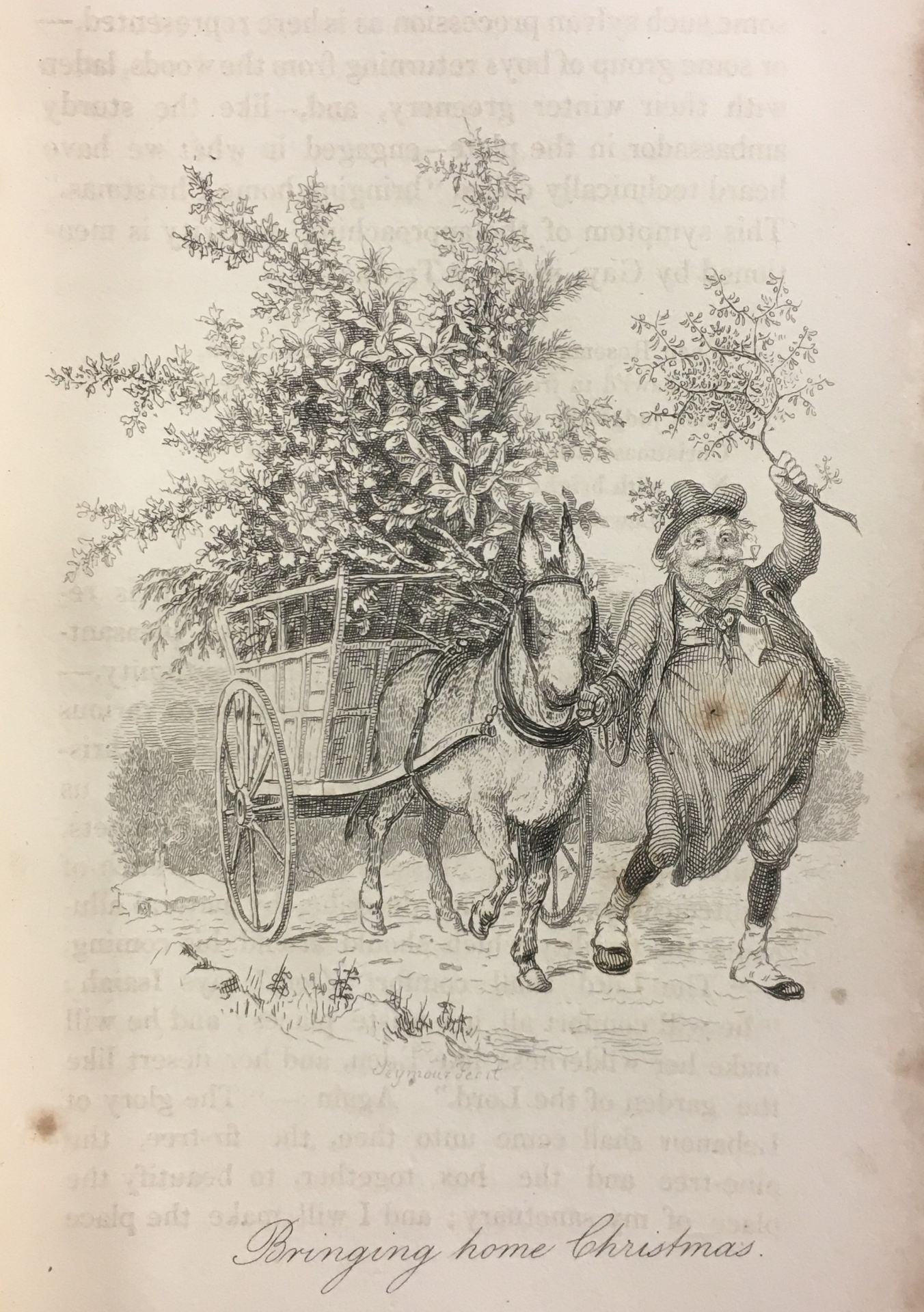
‘Bringing home Christmas’. An illustration by Robert Seymour from ‘The Book of Christmas’ by Thomas Hervey (1836).
Other traditions described in the book are less well-known now, such as the wassail-bowl, which should be composed, according to Hervey, of wine or ale, highly spiced and sweetened with roasted apples floating on its surface.
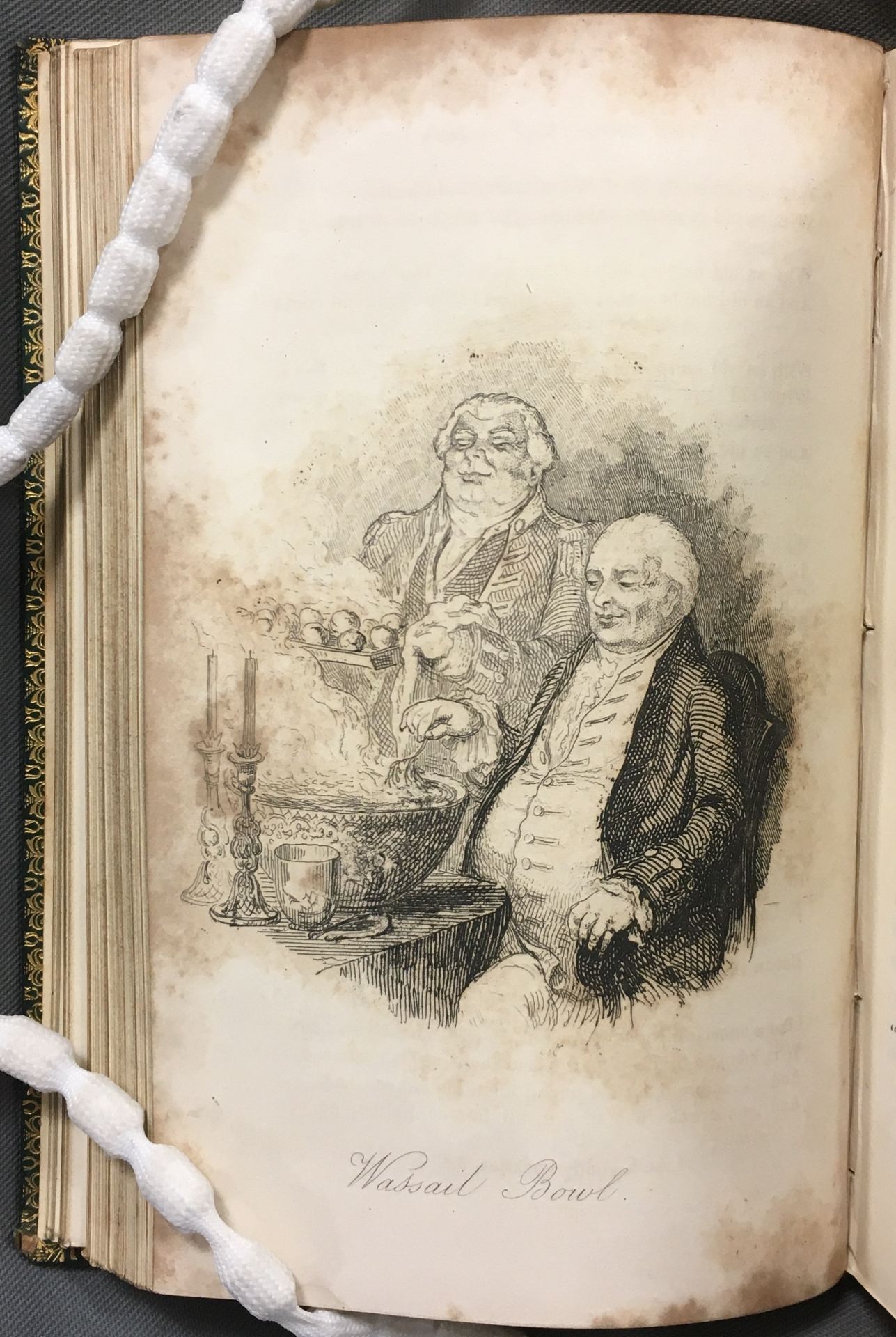
‘Wassail Bowl’. An illustration by Robert Seymour from ‘The Book of Christmas’ by Thomas Hervey (1836).
The origins and traditions of mummers’ entertainments are explored at length. Hervey describes the performance of ancient plays, travelling from house to house in disguise to make merry, dancing hobby-horses and sword-dances.
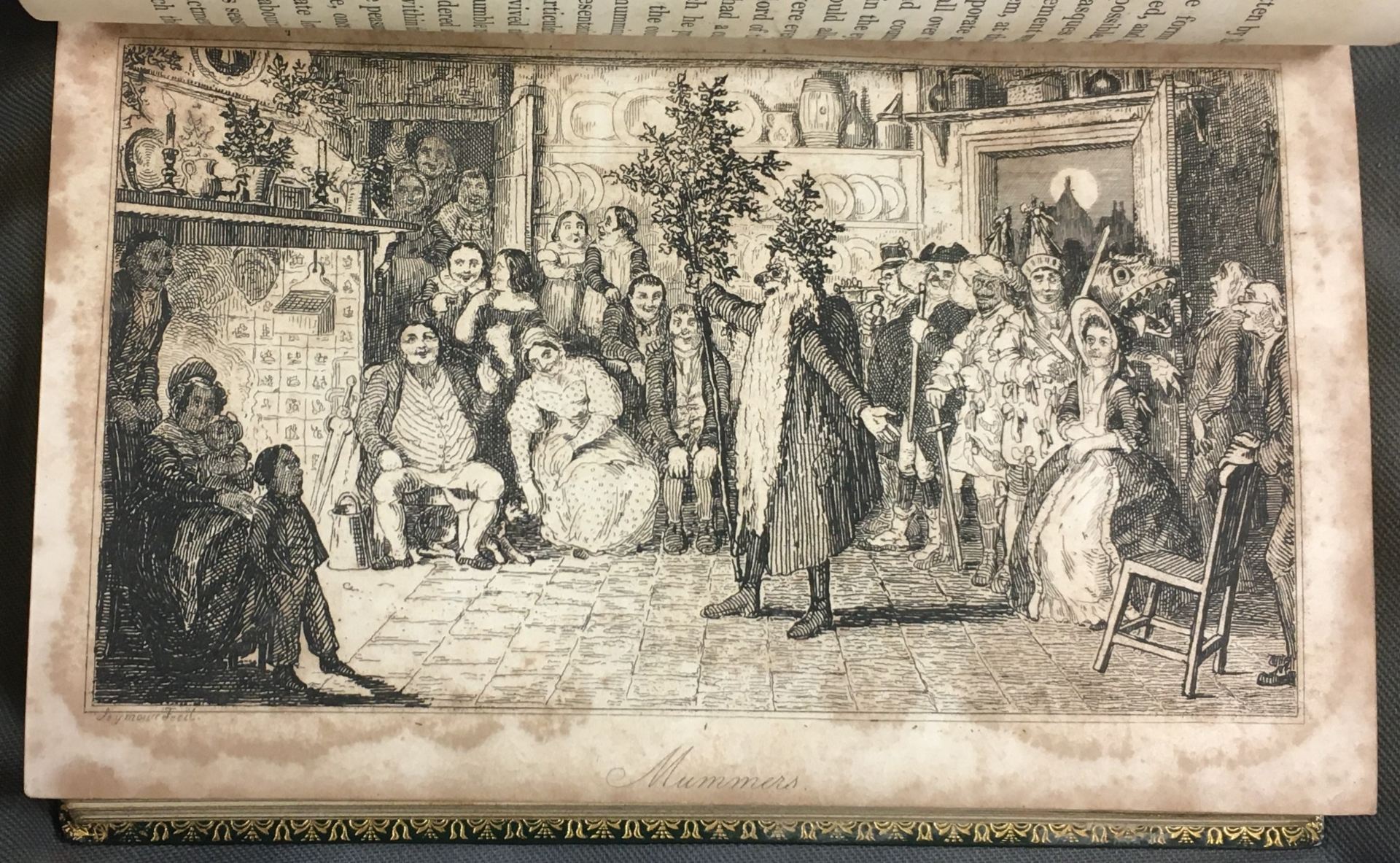
‘Mummers’. An illustration by Robert Seymour from ‘The Book of Christmas’ by Thomas Hervey (1836).
The Book of Christmas helped to fuel the Victorian revival of the Christmas season and was soon followed by the publication of numerous books about Christmas. Our copy will be catalogued in the New Year and will then be available for consultation by readers in Special Collections.

